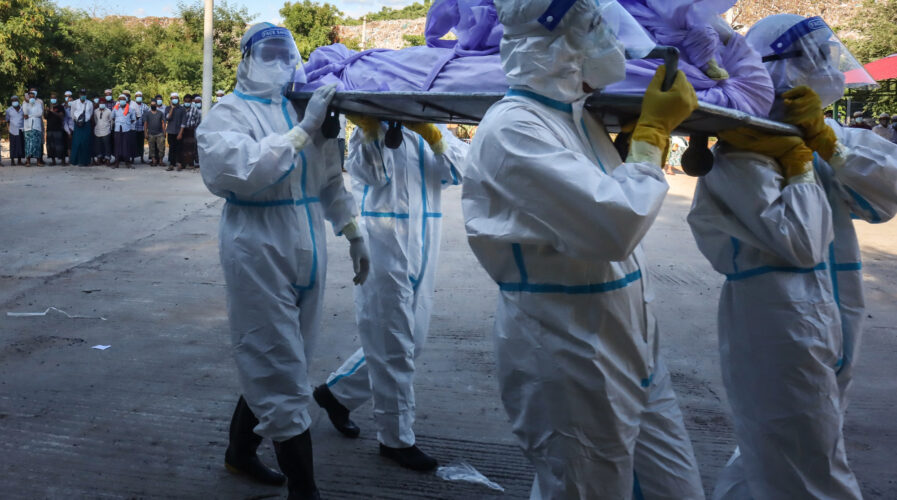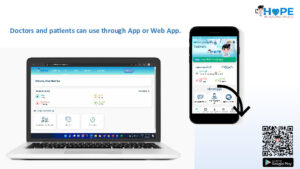
(Photo by STR / AFP)
Myanmar relying on digital healthcare and telemedicine to deal with COVID-19
Telemedicine continues to see an increasing trend globally, especially with COVID-19 still being a big problem in most countries around the world. Even as vaccination rates increase, many prefer to rely on telehealth facilities to deal with their healthcare.
The global telehealth market is expected to reach US$ 636 billion by 2028 with growing adoption in online consultation, behavioral health, cardiology, and radiology driving it. More startups in the field are also contributing to the growth globally.
Digital telemedicine and telehealth platforms are becoming increasingly in demand in the Asia Pacific region as well. Almost all countries in Southeast Asia have telehealth and telemedicine providers to cater to the growing demand.
In Singapore, there are at least nine telemedicine providers that are currently supporting thousands of patients isolated under home recovery and quarantine orders. More providers are expected to be tapped in as cases continue to increase in the island nation.
But it’s not just developed countries like Singapore that are seeing an increasing demand for telemedicine. Myanmar has also been seeing an increasing demand for telemedicine services. Despite several providers in the market, the high number of cases created opportunities for more telemedicine providers as well.

(source – DOC2US)
Telemedicine in Myanmar
As such, Malaysian telemedicine provider, DOC2US is expanding its services to Myanmar via a technical partnership with HOPE Telecare. HOPE Telecare is Myanmar’s all-in-one digital healthcare platform that provides free online healthcare services by volunteer doctors. DOC2US will help accelerate the development of the digital healthcare ecosystem in Myanmar.
According to Dr. Raymond Choy, Chief Executive Officer of DOC2US, the joint venture is the first step for DOC2US to extend our locally developed technology and healthcare solution to countries beyond Malaysia.
“By replicating DOC2US’ existing proven system and business model with “hyper-localized” elements, together with our partners, we aim to complement the physical healthcare ecosystem in Myanmar by freeing up physical medical resources to those who need it,” said Dr. Raymond.
With COVID-19 cases continuing to rise in Myanmar, more state resources need to be channeled to combat the infection spread. The joint venture had earlier called for volunteer doctors to join its virtual health advisory task force to reduce the burden on the public healthcare system. The service would allow the general public to obtain virtual medical consultations for free.
Htun Htun Naing, Chairman of HOPE Telecare, said, “About 70% of our close to 55 million population are living in the rural area where doctors are not easily found, while our internet penetration rate is growing at more than 10% year-on-year from the current 43%, we believe telemedicine is the way forward to improve the quality of care in the country.”
To ensure the technology works seamlessly, DOC2US is leveraging Microsoft’s Azure cloud platform for better flexibility and scalability. DOC2US also provides HOPE with a robust backend system that runs and supports the digital healthcare platform to the frontend where users connect with healthcare professionals and get important health tips and other information.
For the upcoming phases, DOC2US will be incorporating its blockchain technology in the electronic health record, artificial intelligence, and digital signature system to further enhance HOPE’s offerings.
“With the successful rollout in Myanmar, we are actively talking to other partners in our neighboring countries such as Cambodia, Laos, and Vietnam to improve the accessibility to healthcare in those countries. Nevertheless, we are also putting more resources in Malaysia to grow the market share and establish a better ecosystem in Southeast Asia with our strategic partners,” added Dr Raymond.
Even when the virus ultimately becomes manageable, the success of telemedicine services will see the demand for more services in the future. Patients would feel more secure to receive medical advice and diagnosis virtually wherever possible.
At the same time, the increasing usage of medical wearables is enabling doctors to have a better understanding of their patients as they can access these data in real-time and make a medical diagnosis based on it.
READ MORE
- Ethical AI: The renewed importance of safeguarding data and customer privacy in Generative AI applications
- How Japan balances AI-driven opportunities with cybersecurity needs
- Deploying SASE: Benchmarking your approach
- Insurance everywhere all at once: the digital transformation of the APAC insurance industry
- Google parent Alphabet eyes HubSpot: A potential acquisition shaping the future of CRM


